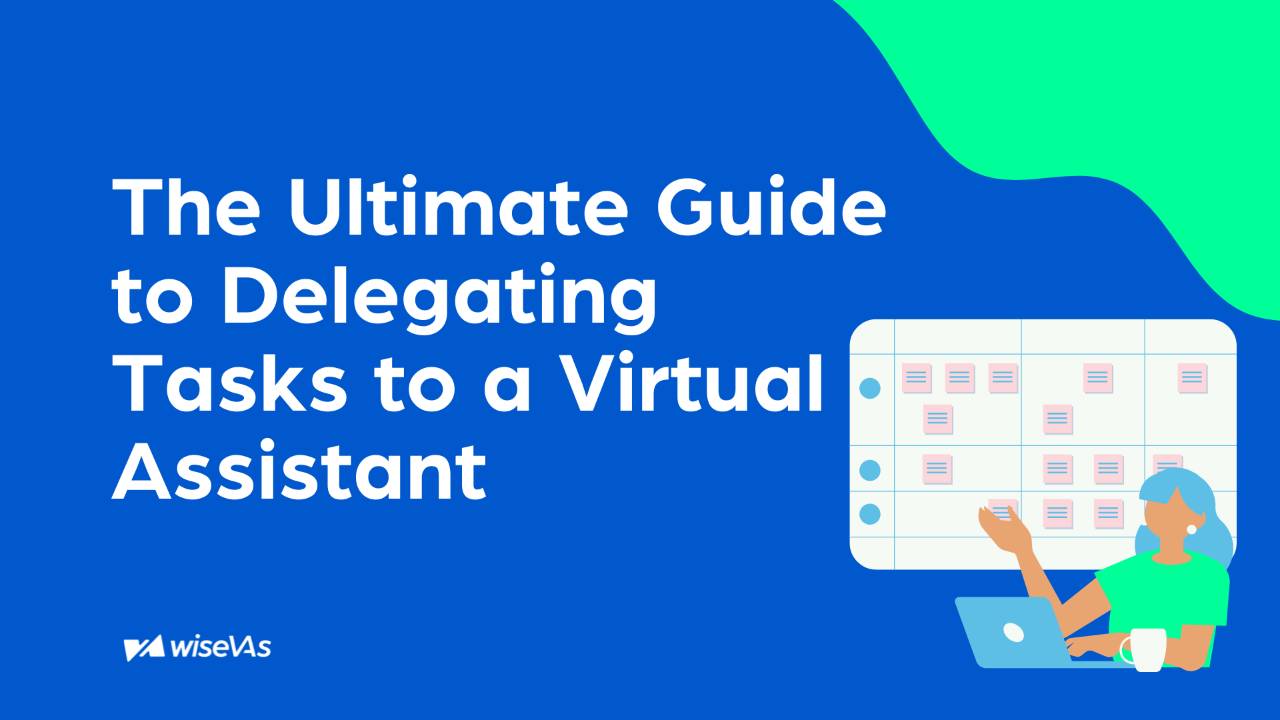The Ultimate Guide to Delegating Tasks to a Virtual Assistant: Step-by-Step for Effective Delegation
Feb 18, 2025
Delegating tasks effectively to a virtual assistant (VA) is a powerful way to boost your productivity, free up your time, and scale your business. However, effective delegation isn't as simple as handing off tasks and hoping for the best. It requires clarity, planning, and structured processes. Here's your definitive step-by-step guide to delegating tasks to a virtual assistant without the headaches.
Step 1: Identify Tasks to Delegate
Begin by auditing your daily, weekly, and monthly tasks. Identify tasks that:
-
Consume a lot of your time (tasks that take hours but don’t necessarily require your unique skillset)
-
Do not directly generate revenue (administrative or operational tasks that don’t contribute directly to sales)
-
You dislike or lack skills for (tasks you dread or are not proficient in)
Common tasks delegated to virtual assistants include:
-
Email management (sorting, responding to, and organizing emails)
-
Scheduling meetings (setting appointments, confirming availability, managing calendars)
-
Social media management (creating posts, scheduling content, engaging with followers)
-
Data entry (inputting and managing data in spreadsheets or CRM systems)
-
Customer support (handling inquiries, resolving issues, providing information)
-
Administrative tasks (filing documents, managing reports, coordinating tasks)
Step 2: Clearly Define Tasks
Once you've identified tasks, clearly outline:
-
The purpose of each task (why it’s important to your business)
-
Step-by-step instructions (detailed guides on how each task should be performed)
-
Expected outcomes and deliverables (specific results or outputs you expect)
-
Deadlines and frequency (clear timing and regularity requirements)
Clear instructions significantly reduce misunderstandings and enhance productivity.
Step 3: Select the Right Virtual Assistant
Match the tasks to the right skill set. Review:
-
VA's previous experience (their background and expertise in similar roles)
-
Technical and soft skills (specific abilities and interpersonal skills needed for your tasks)
-
Communication style (ensuring their way of communicating aligns with your preferences)
Ensure your virtual assistant's expertise aligns with your business needs for maximum efficiency.
Step 4: Use the Right Tools for Delegation
Leverage project management and communication tools such as:
-
Trello, Asana, or Monday.com (to assign tasks, track progress, and manage projects efficiently)
-
Slack or Microsoft Teams (to maintain constant, clear, and instant communication)
-
Zoom or Google Meet (for face-to-face virtual meetings to discuss projects and updates)
Using these tools streamlines workflow and keeps your VA well-informed.
Step 5: Communicate Clearly and Regularly
Establish clear channels of communication and set regular check-ins:
-
Schedule weekly meetings to review progress (discuss task updates, challenges, and feedback)
-
Provide constructive and timely feedback (guidance to improve task outcomes)
-
Be available for questions and clarifications (ensure your VA can quickly resolve doubts)
Regular communication ensures smooth collaboration.
Step 6: Provide Access and Resources
Ensure your VA has:
-
All necessary logins and software access (allowing them to perform their duties without delay)
-
Training materials and resources (guides, documentation, or training sessions)
-
Relevant contact information for team collaboration (enabling effective coordination with team members)
Proper access ensures your virtual assistant can work independently and efficiently.
Step 7: Set Expectations and Boundaries
Clarify work hours, availability expectations, and response times. Discuss:
-
Work schedules and flexibility (specific working hours and how flexible you can be)
-
Response time expectations for messages (expected turnaround time for communications)
-
Availability during critical business hours (when they should definitely be available)
Clear boundaries foster respect and productivity.
Step 8: Trust and Empower Your VA
Empower your virtual assistant to make decisions within their scope. Avoid micromanagement by:
-
Trusting their expertise (allow them to utilize their skills effectively)
-
Allowing autonomy in task management (giving freedom to complete tasks creatively)
-
Providing support when necessary (being available for guidance without constant oversight)
Empowering your VA leads to better performance and greater initiative.
Step 9: Monitor and Optimize
Regularly assess and adjust processes:
-
Identify areas for improvement (analyzing workflows for potential efficiency gains)
-
Refine tasks based on feedback (using VA’s insights to enhance processes)
-
Optimize workflows for better efficiency (continuous improvements to save time and resources)
Continuous improvement keeps your collaboration successful long-term.
Delegating Successfully for Long-Term Success
Effective delegation to a virtual assistant can revolutionize your business productivity. By clearly defining tasks, choosing the right VA, providing appropriate resources, and maintaining open communication, you ensure a smooth and productive working relationship.
Are you ready to start delegating effectively and freeing up your valuable time? Reach out to WiseVAs today to find your ideal virtual assistant partner and take your productivity to the next level.

